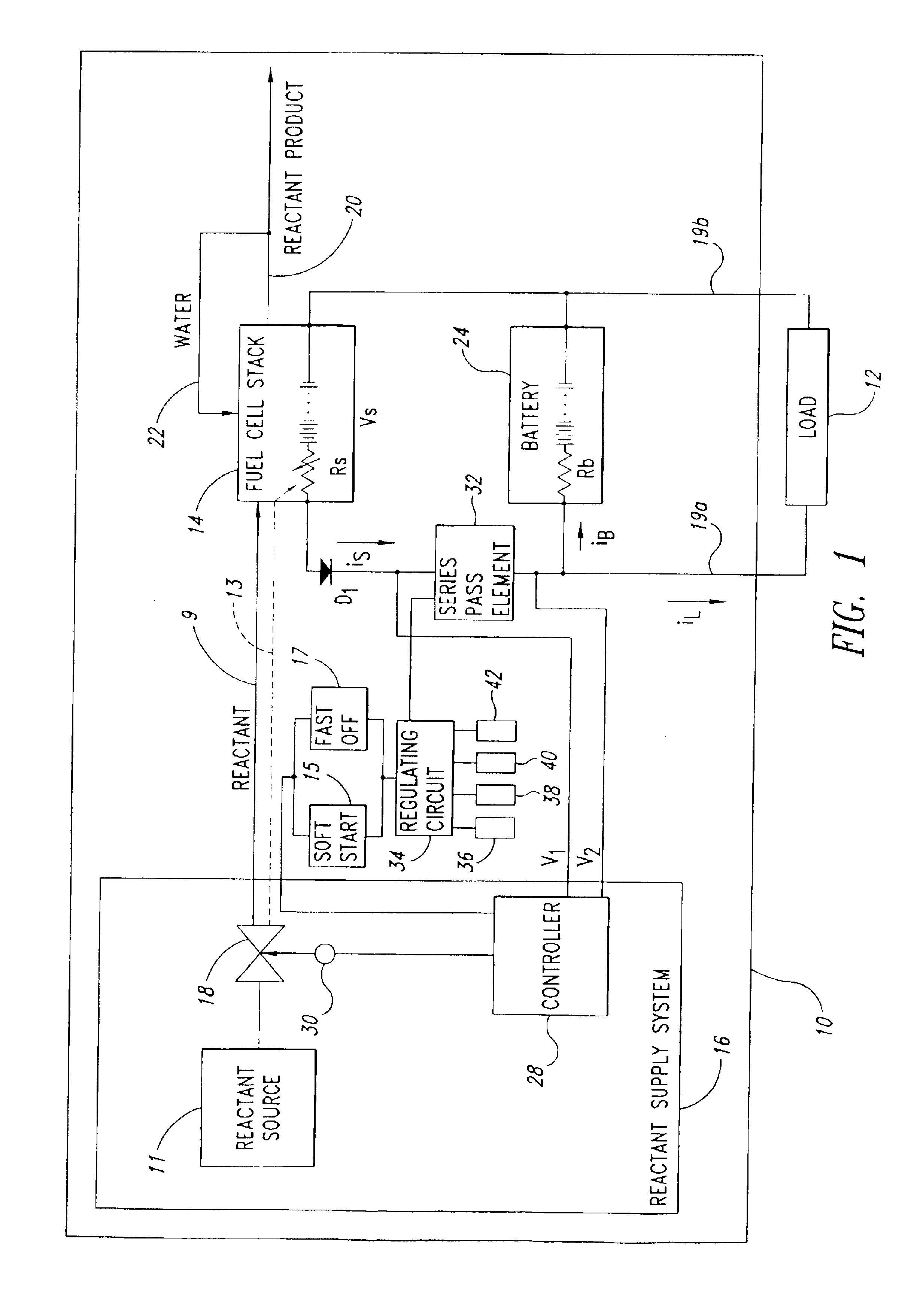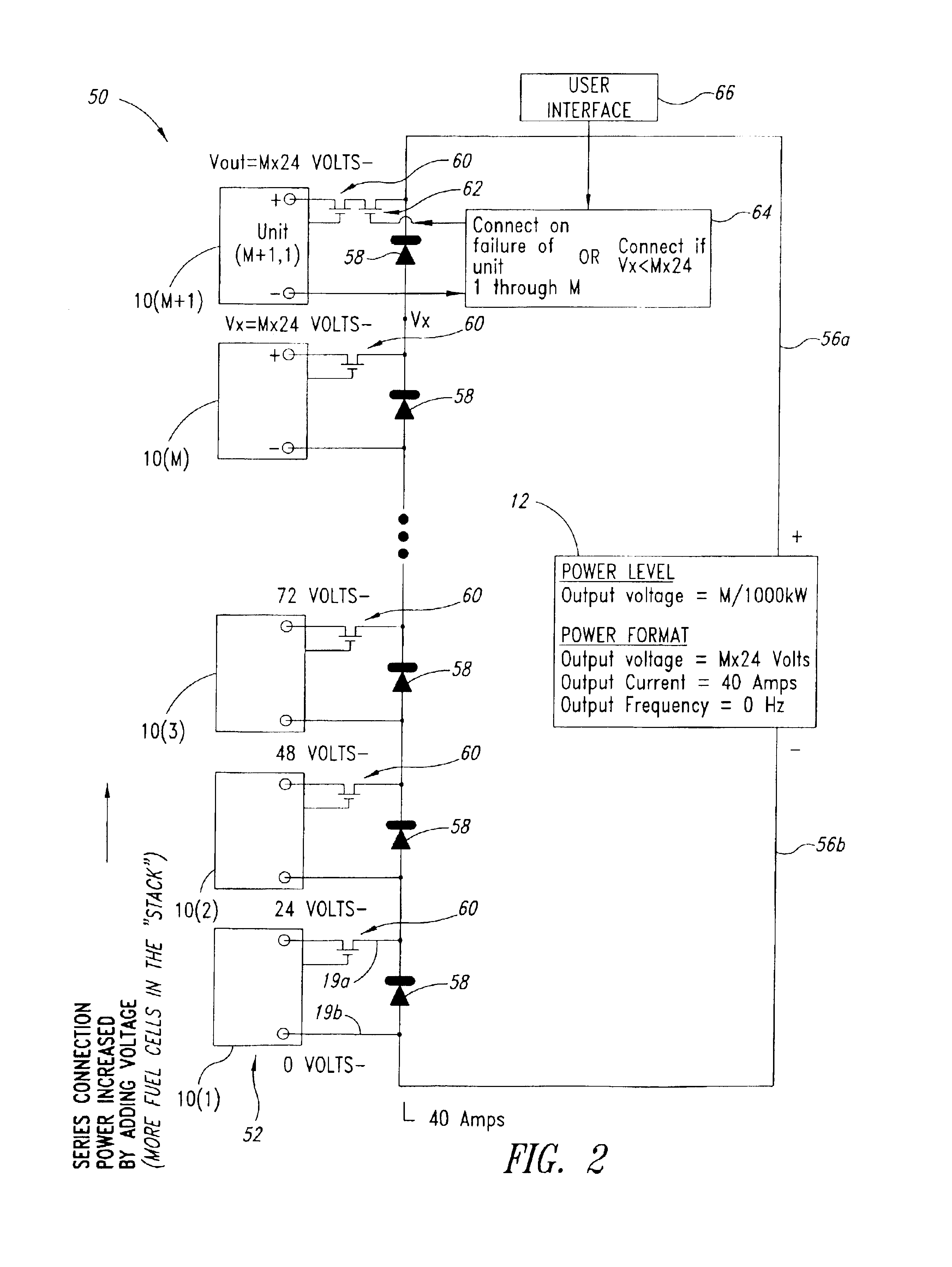Power supply and ultracapacitor based battery simulator
a battery simulator and power supply technology, applied in the direction of pulse automatic control, fuel cell, emergency protective arrangement for limiting excess voltage/current, etc., can solve the problems of increasing hydrogen consumption, exacerbate hydrogen storage problems, and insufficient power plants for some applications, so as to limit power loss
- Summary
- Abstract
- Description
- Claims
- Application Information
AI Technical Summary
Benefits of technology
Problems solved by technology
Method used
Image
Examples
example
[0072]FIGS. 4-6 illustrate three different electrical configurations of the fuel cell systems 10 of the two-dimensional array 68 of FIG. 3, to produce a desired output power, for example 4 kW where each fuel cell system 10 is capable of providing 1 kW at 24 volts and 40 amps. In particular, FIG. 4 shows one illustrated example employing four of the fuel cell systems 10(1,1)-10(4,1) from the first column of the two-dimensional array 68 electrically coupled in series to provide 4 kW of power at 96 volts and 40 amps. FIG. 5 shows an illustrated embodiment of four of the fuel cell systems 10(1,1)-10(1,4) of a first row of the two-dimensional array 68 electrically coupled in parallel to provide 4 kW of power at 24 volts and 160 amps. FIG. 6 shows an illustrated example employing four fuel cell systems 10(1,1), 10(1,2), 10(2,1), 10(2,2) of the two-dimensional array 68, where two pairs of series coupled fuel cell systems 10(1,1), 10(2,1) and 10(1,2), 10(2,2) are electrically coupled in par...
PUM
| Property | Measurement | Unit |
|---|---|---|
| voltages | aaaaa | aaaaa |
| output power | aaaaa | aaaaa |
| power | aaaaa | aaaaa |
Abstract
Description
Claims
Application Information
 Login to View More
Login to View More - R&D
- Intellectual Property
- Life Sciences
- Materials
- Tech Scout
- Unparalleled Data Quality
- Higher Quality Content
- 60% Fewer Hallucinations
Browse by: Latest US Patents, China's latest patents, Technical Efficacy Thesaurus, Application Domain, Technology Topic, Popular Technical Reports.
© 2025 PatSnap. All rights reserved.Legal|Privacy policy|Modern Slavery Act Transparency Statement|Sitemap|About US| Contact US: help@patsnap.com



